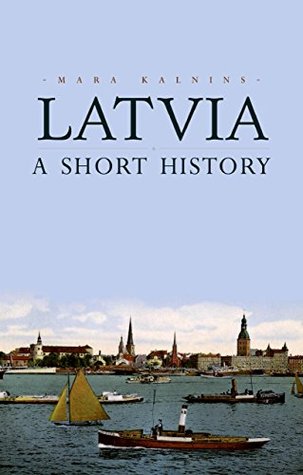Kindle Notes & Highlights
fait accompli
Comptroller
Vogelfreiheit (as free as birds)
He persuaded the German printer Hartknoch to open a publishing house in Rīga, and indeed some of the great works of the century, for example Kant’s A Critique of Pure Reason (1781), were first published there.
Moravian Brethren
Equally the growing interest in folklore and anthropology, the cultural florescence of poetry, music, fiction, the visual arts and crafts, indicated something more important than growing leisure or material prosperity.
Jānis Rainis, who was to become Latvia’s national poet.
On 18 November the independent Republic of Latvia was proclaimed and that date remains the official National Day of Independence.
Jānis Rainis, widely regarded as Latvia’s premier poet,
Sanskrit texts (linguistically akin to Latvian)
rapprochement
These were followed by staged demonstrations in which the local populations called for the establishment of a Soviet Latvia. These ‘spontaneous’ calls were accompanied by a flood of nearly identical telegrams sent to the new government at its first meeting on 21 July also urging Latvia’s incorporation into the USSR.
Despite initial gains, Hitler’s invasion of Russia was to prove unsuccessful and his armies were in retreat from Moscow by Christmas, but they remained in the Baltic. Here they had been greeted as liberators from the Soviet terror and helped by large numbers of local civilians who formed impromptu guerrilla units to harry the Soviet troops.
A German state-owned company, the Landbewirtschaftungsgesellschaft Ostland,
Concentration camps such as Salaspils (18 kilometres south-east of Rīga)
The perpetrators of these atrocities, like the ‘Butcher of Rīga’, were subsequently identified and condemned at the post-war Nuremberg War Crimes Trials,
Germany’s defeat on 2 February 1943 at Stalingrad marked the beginning of her long retreat;
Crimean resort of Yalta on 4–10 February when the ‘Big Three’—Roosevelt, Churchill and Stalin—had met to consider the reconfiguration of Europe after Germany’s defeat,
This would consign them in the decades to come to a kind of limbo, suspended outside the domain of international law.
deracinated
But under Soviet doctrine the labour force was not employed according to its qualifications and skills but on the criterion of loyalty to Party and state.
All books, newspapers and journals published before 1945 were scrutinised and any publication which expressed positive views on Latvia’s independence or Western democratic values in general was removed and destroyed;
Accordingly, in March 1949 44,000 Latvian farmers were rounded up, deported to Siberia and replaced by Slavic immigrants.
The years from 1957 to the mid-1960s have been called ‘the thaw’ and saw the publication of many works criticising the Stalinist era,
There was high demand throughout the USSR for the consumer goods produced in the Baltic states and although shortages of nearly everything were still common, Latvia, Lithuania and Estonia soon achieved the highest standard of living in the USSR, though that fell far short of Western norms.
The white sands of Jūrmala, the resort outside Rīga, became a popular holiday destination for Russians.
As the Latvians saw their countryside increasingly polluted by heavy industry and their communities physically degraded, it is little wonder that alcoholism and the suicide rate rose to become among the highest in Europe.
one youth who had broken a lightbulb in a train was sentenced to ten years’ hard labour in Siberia.
Gauja National Park,
linden
Jean-Paul II was an outspoken critic of Communism and his support for his native land gave hope to tens of millions of all faiths still living in Communist countries.
Helsinki-86 group, founded by a number of dissident Latvians the previous year, mounted a demonstration at the Freedom Monument in Rīga to remember those whom Stalin had deported in 1941.
withheld the permits necessary for holding public gatherings,
On 23 August 1989, the fiftieth anniversary of the signing of the Molotov–von Ribbentrop Pact, two million Baltic men, women and children formed a human chain reaching from Tallinn through Rīga to Vilnius, a distance of over 600 kilometres, to sing their way to freedom.
This public acknowledgement of the illegitimacy of Soviet rule in the Baltic opened the way for the governments of Latvia, Lithuania and Estonia to regain control of their countries.
1988 saw the fragmentation of the Soviet system.
As a shocked international community watched, machine-gun fire was heard and the cameraman Andris Slāpiņš fell, the camera tilting at a crazy angle to the street as his dying words were recorded: ‘Pick up the camera—and film…’
Unlike the confrontational political systems of the United States and the United Kingdom (dominated by two or three political parties respectively), that in Latvia was modelled on European democracies founded on the principles of consensus and of governing by coalition.


